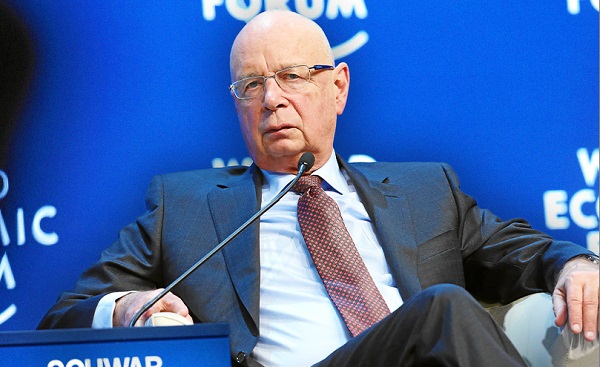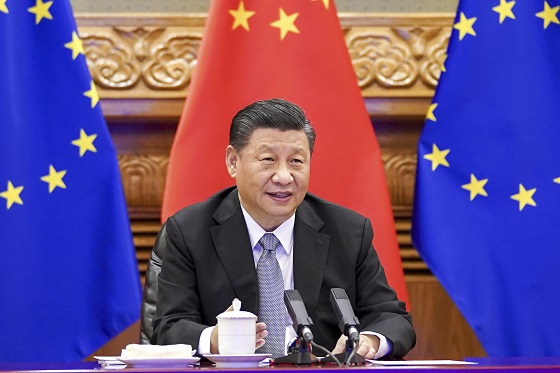Alberta
Electronic monitoring of repeat offenders begins

Offenders and accused who pose a public safety risk may now be subject to 24-7 court-ordered electronic monitoring by Alberta Correctional Services as part of their community supervision conditions
Alberta’s government is taking action to combat rising crime and restore safety by launching an electronic monitoring program as part of its Safe Street Action Plan.
Alberta’s government is keeping a promise and implementing a new ankle bracelet monitoring program in response to the country’s problematic bail system. The ongoing catch-and-release policy brought in by Ottawa forced Alberta’s government to take additional action to protect families and communities.
Starting Jan. 15, the new provincial ankle bracelet electronic monitoring program to help hold high-risk and repeat offenders accountable will officially launch. Through this program, offenders and accused who pose a public safety risk may now be subject to 24-7 court-ordered electronic monitoring by Alberta Correctional Services as part of their community supervision conditions.
“Ottawa’s Bill C-75 has broken the bail system. We are taking an important step toward combating rising crime. High-risk offenders pose a significant risk to public safety and require enhanced supervision in the community. As government, it’s our duty to protect Albertans and their communities. Ankle bracelet electronic monitoring is another tool in the toolbox for courts to consider when determining sentencing or bail conditions, helping us combat rising crime and create safer Alberta communities.”
Announced alongside other measures to enhance community safety in last spring’s Public Safety Statutes Amendments Act, 2024, individuals under a court-ordered electronic monitoring condition will be required to wear a Global Positioning System (GPS) tracking device monitored by a new unit within Alberta Correctional Services, ensuring compliance and consistent oversight of high-risk offenders on bail and community release throughout the province.
Ankle bracelet electronic monitoring will protect Albertans and communities by helping to secure offender-restricted areas, such as victims’ residences, places of employment or any other area deemed off-limits as part of an individual’s bail or community-release conditions. Probation officers within Alberta Correctional Services continue to supervise individuals under provincial community-based court conditions and bail supervision. Previously, this supervision primarily occurred during regular business hours and did not involve the use of GPS electronic monitoring ankle bracelets. Anyone under court-ordered electronic monitoring conditions will be informed of the program requirements, including the tracking of their location.
“Alberta’s government continues to call for federal bail and sentencing reform to stop violent criminals from re-entering our communities. We remain committed to prioritizing the safety of Albertans through measures like the use of ankle monitors, strengthening the Crown Prosecution Service, the courts and policing to protect Albertans from violent criminals.”
Following extensive stakeholder engagements and an open technology vendor procurement process, the launch of the provincial electronic monitoring program enhances community supervision with around-the-clock monitoring and adds to the various methods and community supports already used by probation officers, including regular reporting, referrals to community programs and ongoing engagement with policing partners. Additionally, this program aligns Alberta with programs in other provinces across Canada.
Quick facts
- The new program will supervise individuals whose conditions include court-ordered electronic monitoring.
- Alberta’s electronic monitoring program is supported by $2.8 million to cover implementation costs for the 2024-25 fiscal year.
- In August 2024, the government selected SCRAM Systems as the technology vendor for the ankle bracelet electronic monitoring program through an open procurement process.
- The estimated end date for the electronic monitoring vendor contract is March 31, 2029.
Related information
Alberta
Red Deer Justice Centre Grand Opening: Building access to justice for Albertans

The new Red Deer Justice Centre will help Albertans resolve their legal matters faster.
Albertans deserve to have access to a fair, accessible and transparent justice system. Modernizing Alberta’s courthouse infrastructure will help make sure Alberta’s justice system runs efficiently and meets the needs of the province’s growing population.
Alberta’s government has invested $191 million to build the new Red Deer Justice Centre, increasing the number of courtrooms from eight to 12, allowing more cases to be heard at one time.
“Modern, accessible courthouses and streamlined services not only strengthen our justice
system – they build safer, stronger communities across the province. Investing in the new Red Deer Justice Centre is vital to helping our justice system operate more efficiently, and will give people in Red Deer and across central Alberta better access to justice.”

Government of Alberta and Judiciary representatives with special guests at the Red Deer Justice Centre plaque unveiling event April 22, 2025.
On March 3, all court services in Red Deer began operating out of the new justice centre. The new justice centre has 12 courtrooms fully built and equipped with video-conference equipment to allow witnesses to attend remotely if they cannot travel, and vulnerable witnesses to testify from outside the courtroom.
The new justice centre also has spaces for people taking alternative approaches to the traditional courtroom trial process, with the three new suites for judicial dispute resolution services, a specific suite for other dispute resolution services, such as family mediation and civil mediation, and a new Indigenous courtroom with dedicated venting for smudging purposes.
“We are very excited about this new courthouse for central Alberta. Investing in the places where people seek justice shows respect for the rights of all Albertans. The Red Deer Justice Centre fills a significant infrastructure need for this rapidly growing part of the province. It is also an important symbol of the rule of law, meaning that none of us are above the law, and there is an independent judiciary to decide disputes. This is essential for a healthy functioning democracy.”
“Public safety and access to justice go hand in hand. With this investment in the new Red Deer Justice Centre, Alberta’s government is ensuring that communities are safer, legal matters are resolved more efficiently and all Albertans get the support they need.”
“This state-of-the-art facility will serve the people of Red Deer and surrounding communities for generations. Our team at Infrastructure is incredibly proud of the work done to plan, design and build this project. I want to thank everyone, at all levels, who helped make this project a reality.”
Budget 2025 is meeting the challenge faced by Alberta with continued investments in education and health, lower taxes for families and a focus on the economy.
Quick facts
- The new Red Deer Justice Centre is 312,000 sq ft (29,000 m2). (The old courthouse is 98,780 sq ft (9,177 m2)).
- The approved project funding for the Red Deer Justice Centre is about $191 million.
Alberta
Made in Alberta! Province makes it easier to support local products with Buy Local program

Show your Alberta side. Buy Local. |
When the going gets tough, Albertans stick together. That’s why Alberta’s government is launching a new campaign to benefit hard-working Albertans.
Global uncertainty is threatening the livelihoods of hard-working Alberta farmers, ranchers, processors and their families. The ‘Buy Local’ campaign, recently launched by Alberta’s government, encourages consumers to eat, drink and buy local to show our unified support for the province’s agriculture and food industry.
The government’s ‘Buy Local’ campaign encourages consumers to buy products from Alberta’s hard-working farmers, ranchers and food processors that produce safe, nutritious food for Albertans, Canadians and the world.
“It’s time to let these hard-working Albertans know we have their back. Now, more than ever, we need to shop local and buy made-in-Alberta products. The next time you are grocery shopping or go out for dinner or a drink with your friends or family, support local to demonstrate your Alberta pride. We are pleased tariffs don’t impact the ag industry right now and will keep advocating for our ag industry.”
Alberta’s government supports consumer choice. We are providing tools to help folks easily identify Alberta- and Canadian-made foods and products. Choosing local products keeps Albertans’ hard-earned dollars in our province. Whether it is farm-fresh vegetables, potatoes, honey, craft beer, frozen food or our world-renowned beef, Alberta has an abundance of fresh foods produced right on our doorstep.
Quick facts
- This summer, Albertans can support local at more than 150 farmers’ markets across the province and meet the folks who make, bake and grow our food.
- In March 2023, the Alberta government launched the ‘Made in Alberta’ voluntary food and beverage labelling program to support local agriculture and food sectors.
- Through direct connections with processors, the program has created the momentum to continue expanding consumer awareness about the ‘Made in Alberta’ label to help shoppers quickly identify foods and beverages produced in our province.
- Made in Alberta product catalogue website
Related information
-

 2025 Federal Election2 days ago
2025 Federal Election2 days agoBREAKING: THE FEDERAL BRIEF THAT SHOULD SINK CARNEY
-

 Media2 days ago
Media2 days agoCBC retracts false claims about residential schools after accusing Rebel News of ‘misinformation’
-

 2025 Federal Election2 days ago
2025 Federal Election2 days agoCHINESE ELECTION THREAT WARNING: Conservative Candidate Joe Tay Paused Public Campaign
-

 Business2 days ago
Business2 days ago‘Great Reset’ champion Klaus Schwab resigns from WEF
-

 Bjorn Lomborg2 days ago
Bjorn Lomborg2 days agoNet zero’s cost-benefit ratio is CRAZY high
-

 International2 days ago
International2 days agoPope Francis’ funeral to take place Saturday
-

 Business23 hours ago
Business23 hours agoTrump: China’s tariffs to “come down substantially” after negotiations with Xi
-

 Business2 days ago
Business2 days agoHudson’s Bay Bid Raises Red Flags Over Foreign Influence




